Data Formatting in Excel is a crucial skill for anyone looking to present their information in a clear, understandable, and visually appealing manner. By leveraging Excel’s comprehensive data formatting tools, you can transform raw data into a compelling narrative that speaks volumes. Whether it’s through conditional formatting, consistent data types, or strategic color coding, effective data presentation will not only enhance the readability of your spreadsheets but also empower your audience to make informed decisions. Embrace the full spectrum of Data Formatting in Excel to unlock the true potential of your data.
This Tutorial Covers:
- What Is Formatting in Excel
- How to Format Data in Excel
- Number Formatting in Excel
- Cell Formatting in Excel
- Clipboard and Text Paste in Excel
- Conditional Formatting in Excel
- Table Formatting in Excel
- Cell Style in Excel
1. What Is Data Formatting in Excel?
Data in spreadsheets can be easily modified or transformed from one form to another using formatting in Excel. Both appearance and data type-based formatting are options.
You will discover how to apply formatting in real-time after learning the principles of data formatting in Excel.
2. How to Format Data in Excel?
The look, datatype, and data organization are just a few of the criteria that can be used to format data in Excel, as was previously explained. By using the home tab, you can format data in Excel.
In the subsequent part, you will learn how to apply formatting in Excel based on the number or datatype formatting.
3. Number Formatting in Excel
Although number formats may appear straightforward, using the wrong ones could ultimately result in inaccurate reports. The situation can be better explained with a straightforward scenario.
Imagine that you work in an online business and that your superior asks you to identify the customer who spent the most money during the month so that you can give him a discount on his subsequent purchase.
Let’s assume that all transactions bar one are saved in dollar format. You rushed through it and forgot to add the $ format, which represents the largest transaction done that month. This straightforward example illustrates how quickly things may go wrong.
In only a few easy steps, you can format numbers as follows
Step 1: Choose the entire column, a cell range, or a cell where you want to add Number Formats.
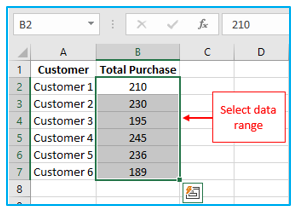
Step 2: Go to the Home button by navigating. To access the Number formatting as displayed below, choose the drop-down menu in the Number Group.
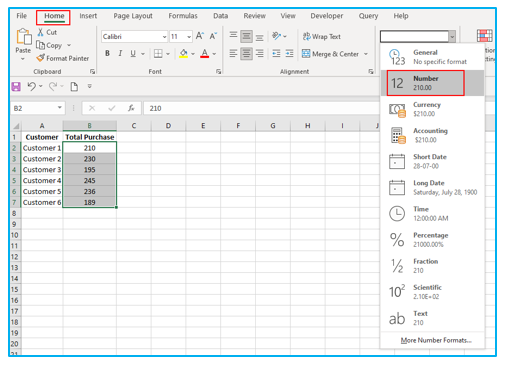
There is another approach that is simpler.
Choose a single cell, a group of selected cells, or a full column. Simply right-click any chosen cell. You’ll see a drop-down as in the example below and select “Format cells…” from the menu.
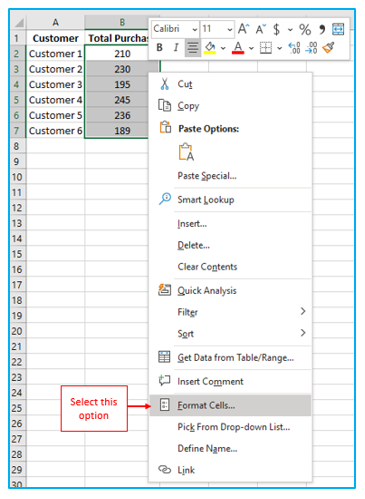
A dialog box named “Format Cells” will open.
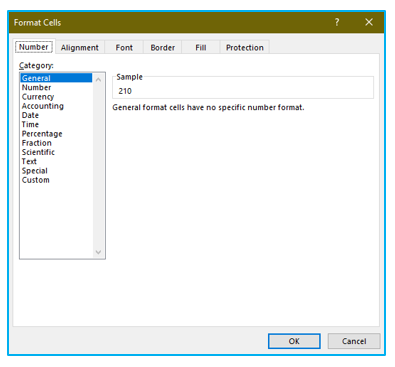
It’s time to explore a little deeper and comprehend the range of formats accessible in Excel now that you know how to use the number formats option.
The kinds of number formats Excel offers are as follows.
General
For each number you enter into the spreadsheet, Excel will automatically use the General number format. The number is displayed exactly as you typed it, without any alterations or extra decimals.
Number
When working with numbers, Number Format is the only option. You can choose the number of decimal points you want to have, and the Number Format will add decimal points to your data to keep it more precise.
Currency
When you want to represent numbers as money, you utilize the Currency Number Format. data on annual investments, for instance. Such data could be represented using dollars.
Accounting
Currency and accounting are completely comparable. To make your currency more accurate, you can add decimal places using the accounting Number Format.
Date
Spreadsheets use the Date Format to treat your input as a calendar date rather than a standard number.
Time
The universal default number format is converted to the time format by the time format.
Percentage
The numbers are represented as percentages in the percentage data format. As an illustration, the Excel spreadsheet computes the percentage values, multiplies by 100, and displays the decimal numbers as percentages.
Fraction
Depending on the kind of fraction you choose, the Fraction Format presents the overall number as a fraction.
Scientific
When compared to money, a general or decimal number, the Scientific Number Format is slightly different. A number’s power is denoted by an exponential number in the Scientific Number Format. The scientific number format, in addition to exponents, also incorporates trigonometry, calculus, a number’s roots, etc.
Text
The text contains data of the textual type. Excel treats all data entered in this area as text format and leaves it as-is without adding any decimals or mathematical symbols.
Custom
In addition to all the options accessible, Excel offers its customers a customizable option that enables them to modify already existing formats in order to create entirely new ones.
4. Cell Formatting in Excel
Number formatting in Excel differs slightly from formatting cell. Text alignment, color, font, cell background color, pictures, etc. are all aspects of cell formatting.
Font Formatting in Excel:
Go to the “Font” group under the “Home” tab.
Excel will provide you with a large selection of font choices when you click the drop-down icon, as shown below.
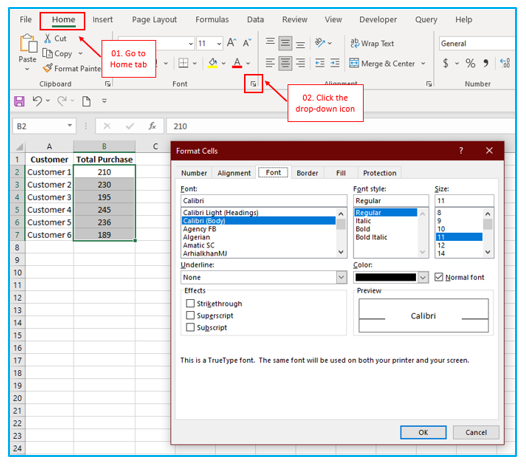
A dialog box will open named “Format Cells” as shown above and you can format the font as desired in the “Font” tab, such as changing the font, adding an effect, styling it, changing the font color, or changing the font size.
Cell Color Formatting in Excel:
Users can change the background color of the cells in the spreadsheet by selecting the “Cell background color” option, as shown below.
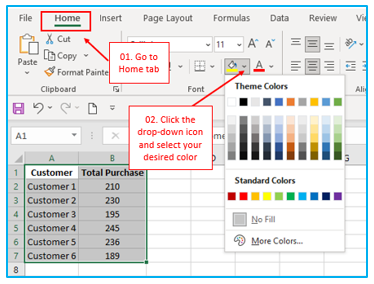
Cell Borders Formatting in Excel:
Users can add cell borders using the spreadsheet borders option when they so desire.
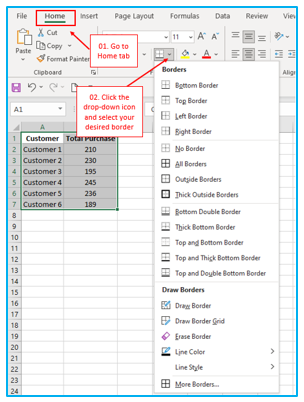
5. Clipboard and Text Paste in Excel
On the left side of the font tab is the clipboard group. You can paste using a variety of alternatives thanks to the clipboard group. You can paste the content that has been copied to the clipboard or use a custom paste option.
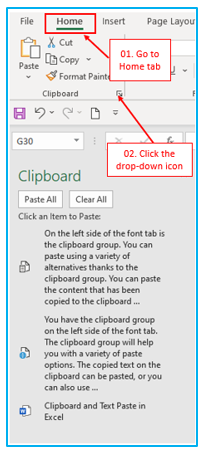
6. Conditional Formatting in Excel
As illustrated below, you have options for Conditional Formatting, Cell Formatting, and Table Formatting on the right side of the Number Format Group.

Users of Excel spreadsheets will be able to highlight or mark specific cells based on logical formulas and functions by using the conditional formatting option, as demonstrated below.
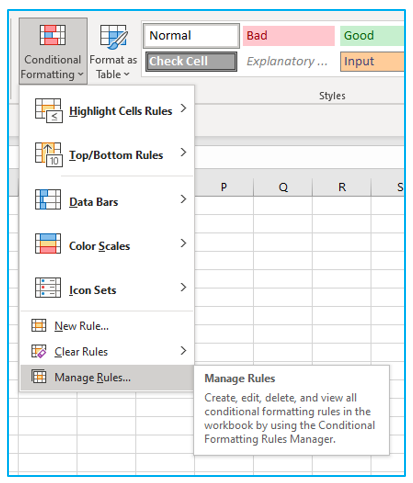
7. Table Formatting in Excel
You can change the tabular data in Excel using a variety of options by using the Formatting Table feature, as seen in the figure below.
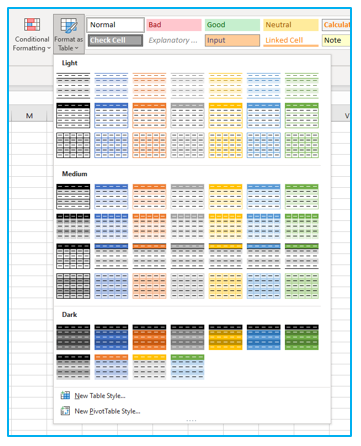
8. Cell Style in Excel
Users of Excel can change the background colors of certain cells to suit their needs by using the Cell Formatting option, as demonstrated in the example below.
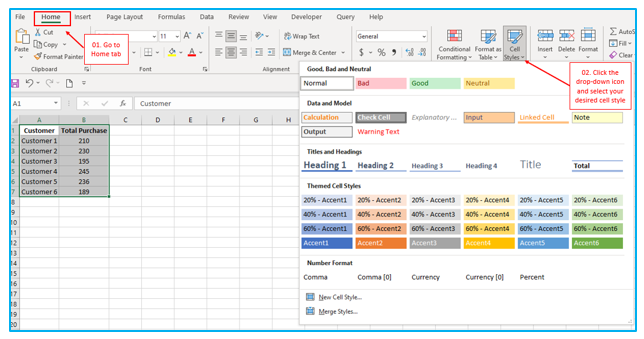
Application of Data Formatting in Excel
- Enhance Readability: Apply different fonts, sizes, colors, and styles to make important data stand out, improving document clarity and reader engagement.
- Categorize Information: Use cell color fills, text colors, and conditional formatting to categorize and distinguish between different types of data, such as income vs. expenses.
- Data Type Consistency: Format cells to match their data types, such as currency, percentages, dates, or phone numbers, ensuring consistency and accuracy in data presentation.
- Highlight Trends and Patterns: Employ conditional formatting to highlight cells based on their values, making it easier to spot trends, outliers, or important thresholds in data sets.
- Organize Tables and Ranges: Utilize table styles and formats to organize and differentiate between data ranges, enhancing the structure and navigability of large datasets.
- Improve Data Entry Accuracy: Set data validation rules to ensure that only data of a certain format or within specific parameters is entered, reducing errors and maintaining data integrity.
You may be interested:
